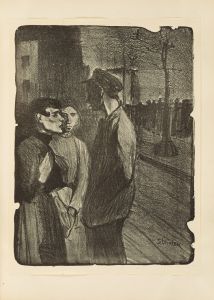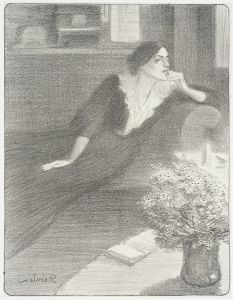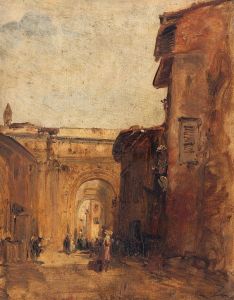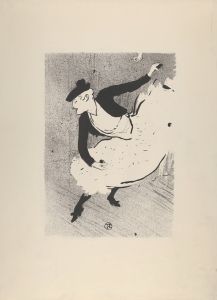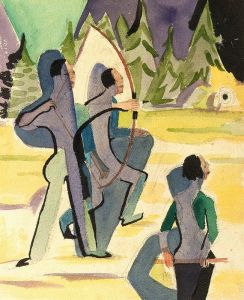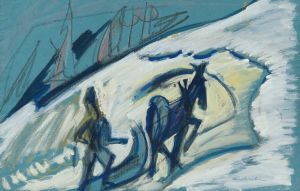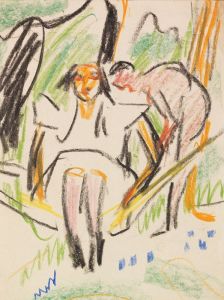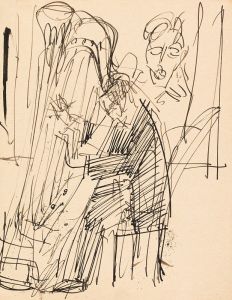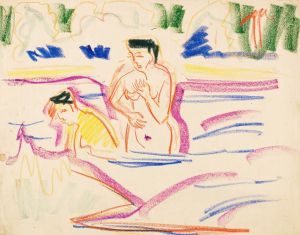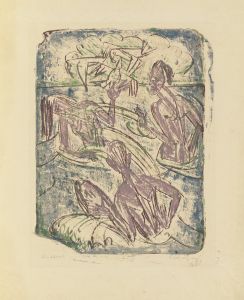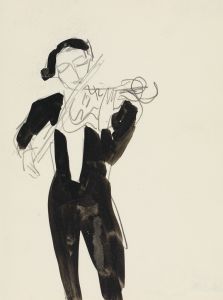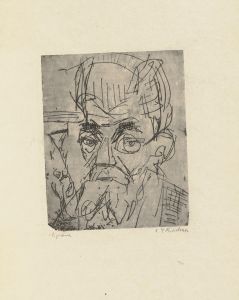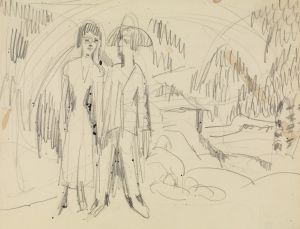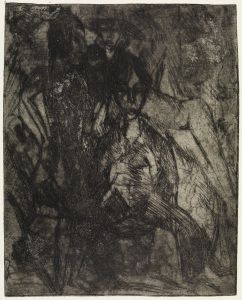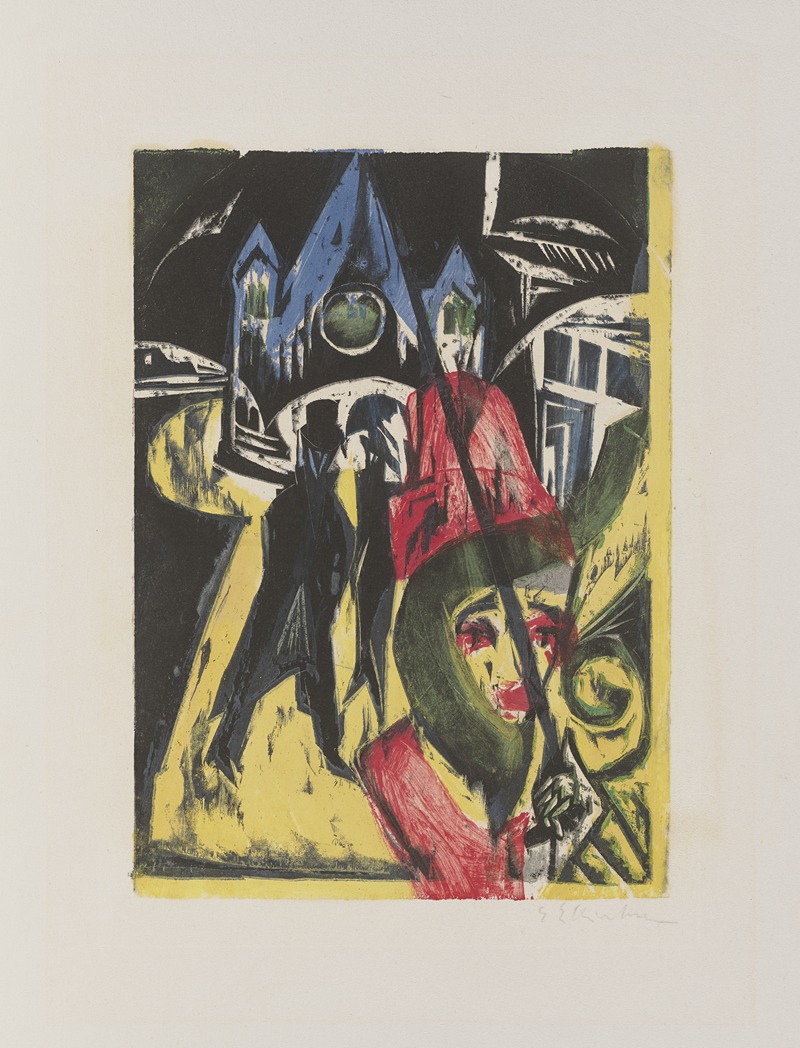
Cocotte on the Street
A hand-painted replica of Ernst Ludwig Kirchner’s masterpiece Cocotte on the Street, meticulously crafted by professional artists to capture the true essence of the original. Each piece is created with museum-quality canvas and rare mineral pigments, carefully painted by experienced artists with delicate brushstrokes and rich, layered colors to perfectly recreate the texture of the original artwork. Unlike machine-printed reproductions, this hand-painted version brings the painting to life, infused with the artist’s emotions and skill in every stroke. Whether for personal collection or home decoration, it instantly elevates the artistic atmosphere of any space.
Ernst Ludwig Kirchner was a prominent German expressionist painter and one of the founding members of the artist group Die Brücke (The Bridge), which played a crucial role in the development of modern art in the early 20th century. Kirchner's work is known for its bold use of color, dynamic compositions, and exploration of modern urban life. One of his notable works is "Cocotte on the Street," which reflects his interest in the themes of urbanization and the changing social landscape of the time.
"Cocotte on the Street" is a painting that captures the essence of urban life in the early 20th century, a period marked by rapid industrialization and social change. The term "cocotte" refers to a fashionable prostitute or courtesan, a subject that Kirchner frequently explored in his work. His depiction of cocottes was not merely an exploration of the seedier side of city life but also an examination of the complexities and contradictions of modernity.
In "Cocotte on the Street," Kirchner employs his characteristic expressionist style, using vivid colors and bold brushstrokes to convey the energy and dynamism of the urban environment. The painting likely features a figure of a woman, possibly a cocotte, set against the backdrop of a bustling city street. Kirchner's use of distorted forms and exaggerated perspectives serves to emphasize the emotional intensity and psychological depth of the scene.
Kirchner's work often reflected his ambivalence towards modern urban life. On one hand, he was fascinated by the vibrancy and excitement of the city; on the other, he was critical of its alienating and dehumanizing aspects. This duality is evident in "Cocotte on the Street," where the figure of the cocotte can be seen as both a symbol of modernity and a critique of its moral and social implications.
The painting is part of Kirchner's broader exploration of the theme of the metropolis, which he saw as a place of both opportunity and danger. His work often depicted the city as a space of anonymity and isolation, where individuals were both liberated and trapped by the forces of modernity. In this context, the cocotte becomes a powerful symbol of the tensions and contradictions inherent in urban life.
Kirchner's interest in the subject of cocottes and urban life was influenced by his experiences in cities like Berlin, where he moved in 1911. Berlin, at the time, was a vibrant cultural and artistic center, but it was also a place of social upheaval and change. Kirchner's work from this period reflects his engagement with the complexities of modern urban existence and his desire to capture its essence through his art.
"Cocotte on the Street" exemplifies Kirchner's ability to convey the emotional and psychological impact of modernity through his unique expressionist style. His work continues to be celebrated for its innovative approach to color, form, and subject matter, and it remains an important part of the canon of modern art. Kirchner's exploration of themes such as urbanization, modernity, and the human condition has left a lasting legacy, influencing generations of artists and shaping the course of 20th-century art.





